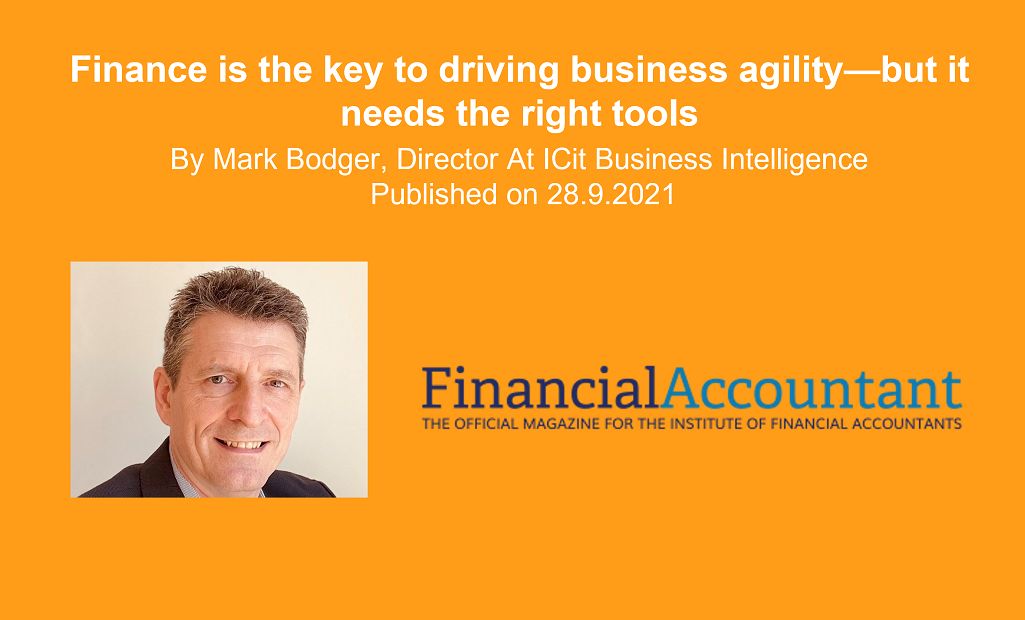Author Mark Bodger ACMA, ICit
Why CFOs need an integrated Cash Flow Forecasting Model
Cash is king. Most businesses fail not because they don’t make a profit but because they run out of cash.
Cash is the lifeblood of any business. Cash flow modelling is the practice of planning and forecasting the sources and uses of cash – to provide decision makers with accurate information that enables them to make the most effective use of available cash. It also acts as an early warning system to identify if there is a danger of the business running out of cash in the short to medium term.
The current economic climate, overshadowed by the Covid-19 pandemic, has increased uncertainty, but has also produced winners and losers in many sectors. Liquidity is the key metric. E.g. online retailers are experiencing strong liquidity, whilst high street retailers have been struggling to survive.
What benefits does cash flow modelling provide?
Cash flow modelling enables companies to manage solvency more proactively. It improves the going concern of the organisation and it improves the understanding of the impact of business drivers on cash flow, leading to better decisions.
However, Cash flow modelling is not a discreet exercise and should form part of an integrated business planning model – Profit and Loss, Balance Sheet and Cash flow. To put this into perspective, Financial Planning and Analysis (FP&A) professionals need to use a variety of financial modelling techniques to support business decision making and to satisfy funders and investors.
The intense pressure on UK businesses brought about by the combination of Brexit and the Covid-19 pandemic has made cash flow forecasting a business-critical process. Uncertainty in trading conditions, consumer confidence and government support, has put cash flow modelling at the top of every CFOs priority list.
1. Short term cash flow modelling
Short term cash flow modelling is required to support day to day operational decisions to manage cash and where businesses need to demonstrate overall liquidity and maintain funder confidence. This is particularly critical in businesses that are required to apply quarterly covenant tests by their lenders.
- Is your current financial model capable of producing near term cash flow forecasts e.g. weekly over the next 13 weeks?
- How easy is it to amend your model to adapt to changes in the business environment?
- Are you confident that the forecast is accurate?
2. Scenario planning models
Scenario planning models support medium to long term decision timeframes and management of funders and other investors in the short term.
- Is your financial model capable of running sensitivity analysis and scenarios?
- Do you conduct ‘what-if?’ testing and analysis on your business plans?
- How long does this take?
3. Forecast validation
Forecast validation provides confidence to lenders and stakeholders that forecasts are accurate and can be trusted. In circumstances where trading conditions have been materially impacted (such as during the current pandemic with heavy reliance on Government support).
- Are you confident in the reliability and accuracy of your forecasting tools?
- Does your forecast take a long time to update and validate?
- Do you track forecast accuracy? (Do you have the systems to do so?)
4. Data analysis and problem solving
Understanding the key data impacting your business (and the ability to model this accurately) will be an important factor in how to identify opportunities and threats as the economy evolves in the near term.
- Do you have a trusted solution to manage your data?
- Has the current crisis revealed gaps in your data capture or analytical capability?
- Can you readily visualise and explain data to key stakeholders?
Having considered the questions above, you may conclude that you need to invest in a business planning solution. ICit has been advising clients on this subject for over 20 years and have a few recommendations “Do’s and Don’ts” when designing the solution:
Best Practice Modelling
- Develop a model that facilitates analysis and reporting
- Develop a driver-based model and assign accountability for driver targets, to encourage the right behaviours across the organisation
- Reconcile long- and short-term cash flows
- Keep a history of driver actuals to ensure patterns and trends are understood
- Maintain a rolling forecast, updating period opening positions with actuals to improve short-term forecasting accuracy
- Regularly share cash forecasts and performance information with lenders, to encourage their support
Things to Avoid
- Don’t rely on modelling only one scenario
- Don’t rule out the effect of environmental factors such as inflation and currency exchange rates
- Avoid developing a cash flow model in isolation of the balance sheet and P&L. The rigour of balancing the balance sheet increases assurance that the cash forecast is realistic
- Don’t make cash flow management a purely financial function. Communicate with wider management to avoid a culture focused on the top and bottom lines of the P&L
- Avoid taking an optimistic view when forecasting drivers; instead, form an independent view and ensure expenditure is aligned to this
Summary
Cash flow modelling is a business-critical process (in order to manage liquidity, debt, covenants and cash burn). Therefore, business leaders and credit providers need to be able to trust the output of the financial forecasting model. By embedding the cash flow forecast into the business planning solution, you will ensure greater accuracy and flexibility – based on business drivers rather than gut feel projections.







